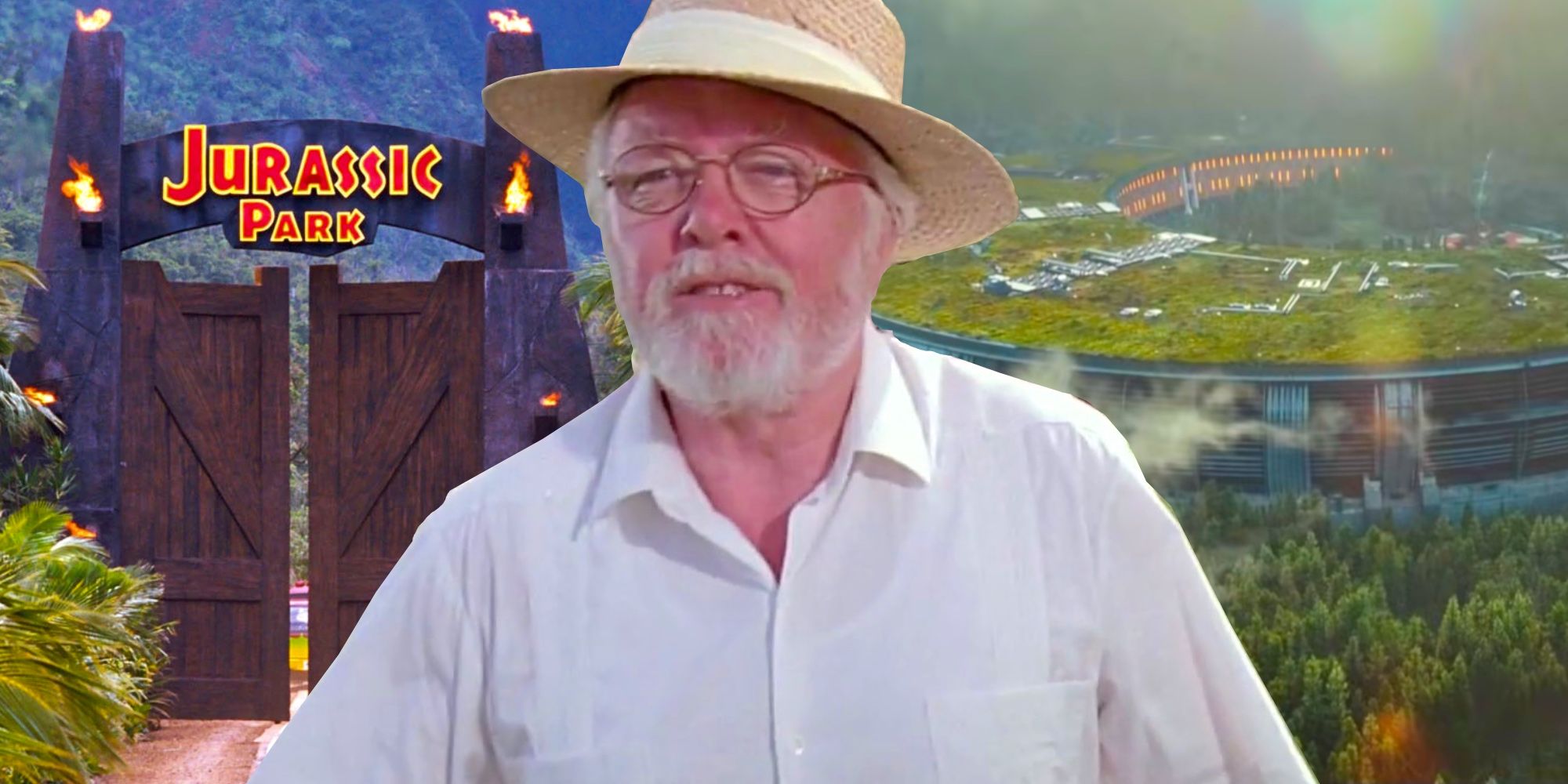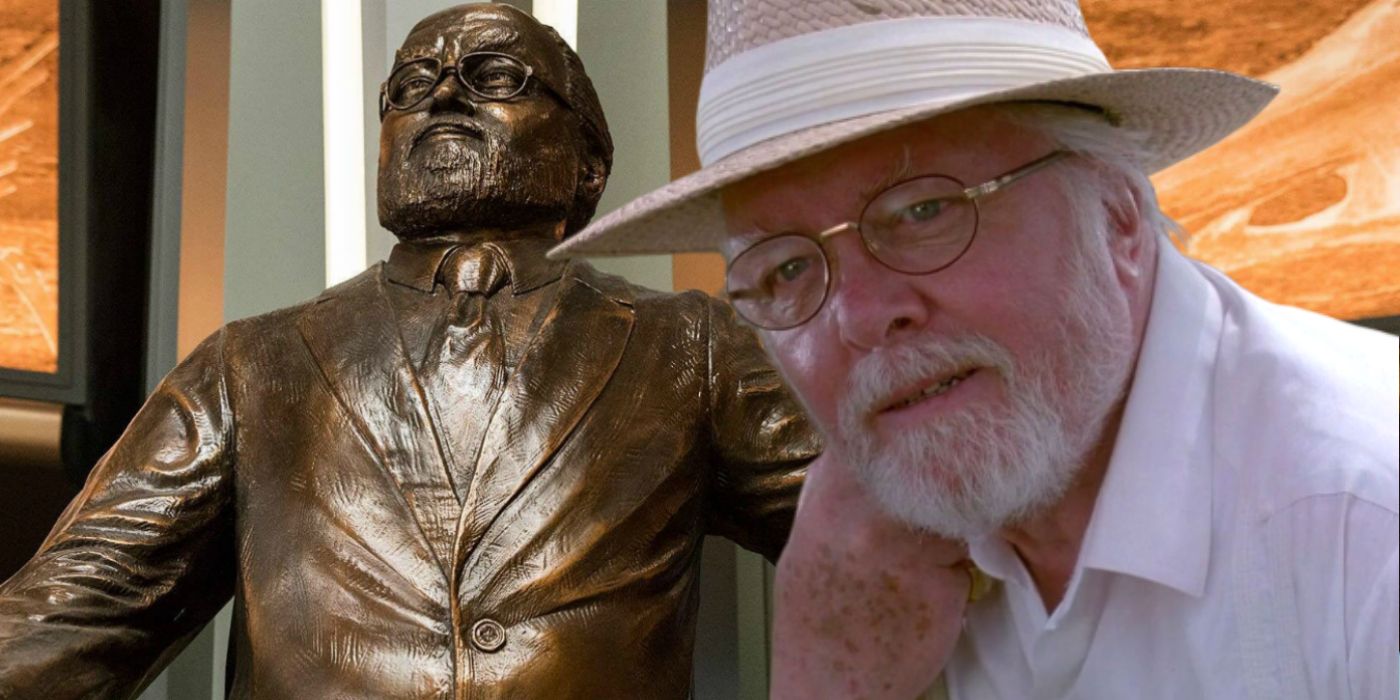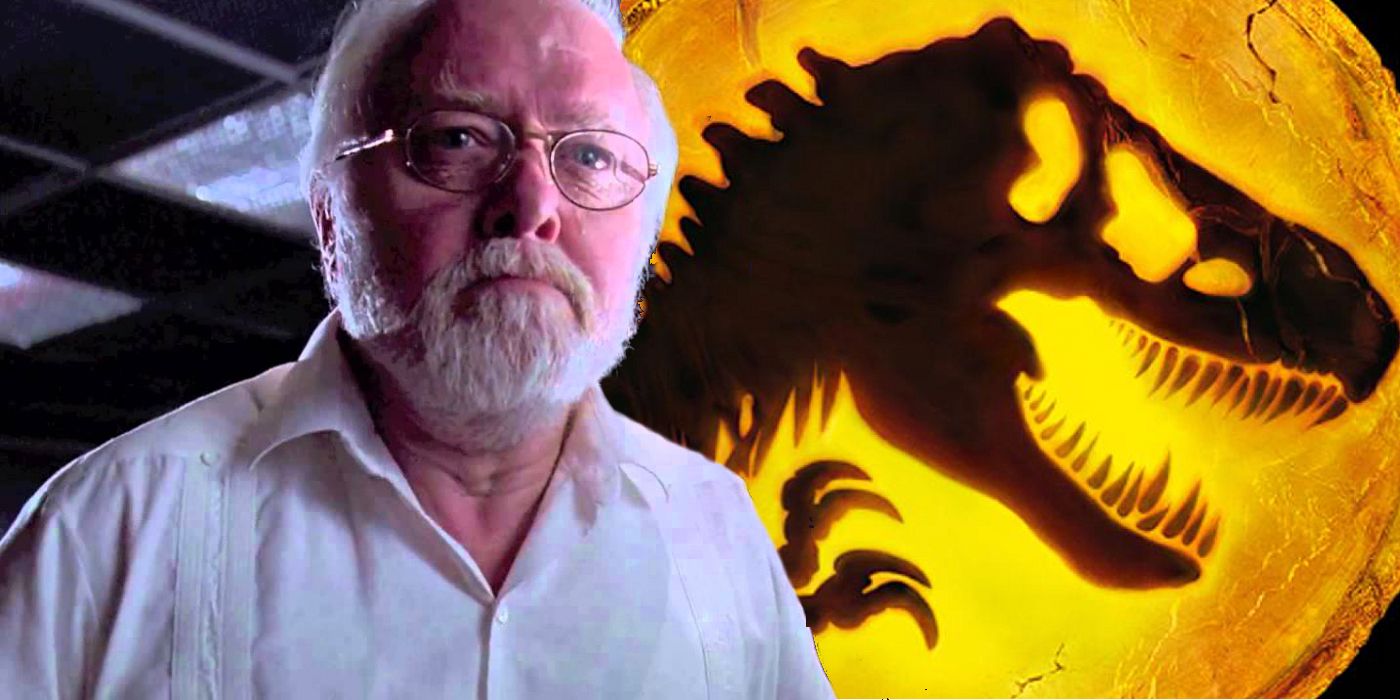Warning! SPOILERS for Jurassic World Dominion
Reportedly the final film in the franchise, Jurassic World Dominion fully rescues the legacy of John Hammond, the original founder of Jurassic Park. While the failings of Jurassic World served to ignore and misinterpret Hammond's dream after his death, the third film in the Jurassic World trilogy helps redeem his true wishes and dream following the incident seen in the first Jurassic Park film nearly 30 years prior. Rather than continuing to create a park, the various dinosaurs living amongst humanity are finally able to coexist.
In the first Jurassic Park, InGen CEO John Hammond "spared no expense" in his original dream to create the most impressive and exciting park of all time on the island of Isla Nublar. Intending to invite guests from all over the world to take tours, Hammond wanted everyone to see the incredible dinosaurs his geneticists had managed to revive 65 million years after the animals had been selected by nature to become extinct. However, multiple levels of security and attempts to control the dinosaurs failed, resulting in significant deaths and chaos. Ultimately, the incident opened Hammond's eyes to the fact that humanity needed to step aside and let the animals live in freedom and isolation (as seen in Jurassic Park: The Lost World).
However, Hammond's legacy and ultimate dream were not fully realized and was largely ignored in the Jurassic World trilogy. A new park was constructed complete with unique failures all its own as well as a new incident that put far more lives at risk than the original park. Keeping that in mind, here's how Jurassic World Dominion rescues Hammond's legacy after the initial disasters and failures attributed to Jurassic World, the replacement for Jurassic Park.
How Jurassic World Failed John Hammond's Jurassic Park Legacy
Played by the late Richard Attenborough, John Hammond had roles in the first Jurassic Park, as well as the sequel entitled The Lost World. However, the creator of Jurassic Park has been referenced in every Jurassic film and project to date. Following the events of the first incident on Isla Nublar, Hammond gained a new perspective and mission when it came to the dinosaurs he helped bring back to life. As it related to both Isla Nublar and its sister site Isla Sorna, Hammond's desire was for both islands to be left alone, untouched by humanity for them to become true dinosaur preserves, allowing nature to run its course so that "life would find a way."
However, InGen was purchased by Simon Masrani in 1998 shortly after Hammond's death following the events of The Lost World. Jurassic World was soon constructed in 2005 according to the franchise canon. Entrusted with "Hammond's dying wish," Masrani created an even bigger park with greater levels of security which successfully ran for a full decade. Erecting a statue of Hammond himself in front of the Hammond Creation Lab named in his honor, it seemed as though Jurassic World was the fulfillment of Hammond's original legacy, but not the one he came to have after realizing the error of his ways.
Dominion's Ending Fixes Jurassic World's John Hammond Legacy Problem
Following the closure of Masrani's park in the first Jurassic World due to the creation of the genetic hybrid known as the Indominus Rex, the events of Jurassic World: Fallen Kingdom saw several species being removed from Isla Nublar and taken to the Lockwood Estate to be sold on the black market while several species were set free to roam the globe. Now, Jurassic World Dominion sees the world grappling with the concept of coexistence with dinosaurs while some (such as Claire Dearing and Owen Grady) do what they can to save and protect the animals from those who would mean them harm. Interestingly enough, InGen's direct competitor BioSyn created a dinosaur sanctuary in the Dolomite Mountains, where the animals could be protected and their DNA safely researched. However, the sanctuary's true purpose was to serve as a smokescreen of altruism while CEO Lewis Dodgson had geneticist Henry Wu secretly develop prehistoric locusts that would only eat non-BioSyn crops, allowing the company to control the food market.
However, once BioSyn's corruption was exposed by the end of Jurassic World Dominion, the United Nations took over the dinosaur sanctuary. While BioSyn had around 20 different species living in the preserve, it was reported that the UN gradually added to it until it housed over 50 different species, all of which were allowed to live without direct human interference, helping humanity's coexistence with the prehistoric creatures. As a result, Jurassic World Dominion finally rescues Hammond's true legacy he built after the events of Jurassic Park. While building Jurassic World was a second attempt at fulfilling his original (yet flawed) dream, the creation of an isolated sanctuary in this final chapter redeems his ultimate dream in the Jurassic franchise.



